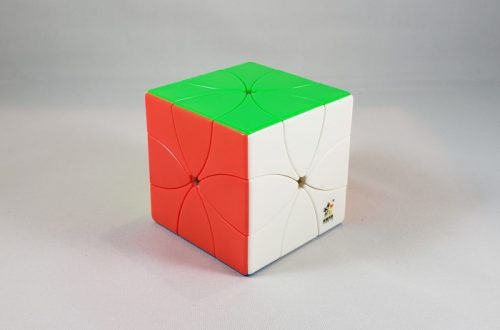Part 1: Understanding Puzzle Mechanics
Puzzles come in all shapes, sizes, and difficulties, but they all share common mechanics. Understanding the basics of puzzle mechanics can help you create engaging and challenging puzzles at home. Here are two essential points to consider:
1. Mechanics:
Understanding the mechanics of puzzles is essential for creating engaging and challenging experiences. Each puzzle type has its own unique set of rules and mechanics that dictate how players approach and solve them. For instance, when tackling a jigsaw puzzle, players rely on visual matching and connecting pieces to form a complete picture. On the other hand, logic puzzles such as sudoku or crosswords require deductive reasoning, logic, and critical thinking to arrive at the correct solution. By recognizing these fundamental mechanics, puzzle creators can design challenges that cater to different problem-solving skills and cognitive abilities, ensuring that the puzzles are both stimulating and enjoyable for the players. Ultimately, a deep understanding of these mechanics allows for the creation of diverse and engaging puzzles that offer a range of cognitive and intellectual challenges to the participants.
2. Level of Difficulty:
When creating puzzles, it is crucial to consider the spectrum of complexity, ranging from straightforward brain teasers to elaborate enigmas. Tailoring the difficulty level to suit the intended audience is essential. A well-designed puzzle strikes a delicate balance, presenting a challenge that is engaging and stimulating without becoming overly frustrating. By understanding the demographic and their cognitive abilities, puzzle creators can optimize the level of difficulty to ensure that the challenge is both enjoyable and achievable. This approach allows for the crafting of puzzles that captivate and inspire problem-solving skills while remaining solvable within a reasonable timeframe. Additionally, considering the diverse range of skills and experiences within the audience can lead to the creation of puzzles that offer a satisfying challenge to a broad spectrum of participants, ensuring that the puzzles remain stimulating and rewarding for all.
Part 2: Creating Engaging Puzzle Themes
The theme and setting of a puzzle play a significant role in its overall appeal. By choosing a compelling theme and crafting puzzles around it, you can enhance the player’s experience. Here are two key points to consider when creating engaging puzzle themes:

1. Storytelling:
Integrating storytelling elements into puzzles can elevate the overall experience by adding an extra layer of depth and intrigue. By weaving a narrative or story into the puzzle theme, creators can transport players to different worlds, whether it’s a specific historical era, a fictional realm, or an adventurous narrative. This integration not only engages the player’s imagination but also provides context and meaning to the puzzle-solving process, making it a more immersive and compelling experience. The narrative can serve as a driving force, offering clues, context, and a sense of purpose to the challenges at hand. It creates an emotional connection and investment for the player, enhancing their overall enjoyment and satisfaction when solving the puzzles. Ultimately, the incorporation of storytelling elements within puzzles can transform them into captivating and enriching experiences, heightening the sense of discovery and adventure for the participants.
2. Visual Aesthetics:
Capturing the player’s attention through visual appeal is essential in creating an engaging puzzle experience. The use of vibrant colors, intricate designs, and thematic elements can significantly enhance a puzzle’s allure. Visual aesthetics play a crucial role in immersing players in the puzzle-solving process. When crafting puzzles, the use of imagery, symbols, or symbolic representations that align with the chosen theme can add visual depth and thematic coherence. These elements not only contribute to the overall attractiveness of the puzzle but also provide visual cues and context that complement the storytelling and thematic elements.
Additionally, incorporating visually stimulating elements can stimulate the player’s curiosity and imagination, making the puzzle-solving experience more captivating and enjoyable. By paying attention to visual aesthetics, puzzle creators can effectively engage and captivate the participants, making the overall experience more enriching and visually compelling. Ultimately, the visual appeal of a puzzle enhances its overall allure, drawing players into a world of exploration and discovery.
Part 3: Utilizing Varied Puzzle Formats
Diversity in puzzle formats can provide a rich and engaging experience for the player. By incorporating different puzzle types, you can offer a well-rounded challenge and cater to various preferences. Here are two crucial points to consider when utilizing varied puzzle formats:
1. Mix of Puzzle Types:
Maintaining a fresh and engaging puzzle experience involves offering a diverse mix of puzzle types. Introducing a combination of visual, logic, word, and physical puzzles provides a comprehensive and varied challenge that can cater to a broad audience with different problem-solving styles. Visual puzzles may involve pattern recognition or spatial reasoning, while logic puzzles require deductive reasoning and critical thinking. Word puzzles, such as crosswords or anagrams, engage linguistic and cognitive skills. Physical puzzles, such as dexterity or manipulative tasks, provide a hands-on and interactive experience. By incorporating a range of puzzle formats, creators can appeal to a wider audience, accommodating diverse preferences and cognitive abilities. This diversity ensures that participants with varying skill sets and interests can find puzzles that align with their strengths, making the overall experience inclusive and enjoyable for all. Ultimately, the mix of puzzle types enhances engagement and provides a well-rounded challenge, making the experience both stimulating and rewarding.

2. Interactive Elements:
Introducing interactive elements into your puzzles can enhance the overall experience. Whether it’s incorporating physical manipulation, digital interfaces, or augmented reality components, interactive elements can add an immersive dimension to puzzle-solving. By allowing players to interact with the puzzles in diverse ways, you can create a more dynamic and captivating experience.
Part 4: Testing and Refining Your Puzzles
Once you’ve crafted your puzzles, it’s essential to test and refine them to ensure they offer a satisfying challenge. Here are two critical points to consider when testing and refining your puzzles:
1. Playtesting:
Enlist the help of friends, family, or a focus group to playtest your puzzles. Observing how others engage with your puzzles can provide valuable insights into the clarity of instructions, the difficulty level, and the overall enjoyment of the experience. Their feedback can help you identify any potential areas for improvement and refine the puzzles accordingly.
2. Iterative Design:
Embrace an iterative design process to continuously refine and enhance your puzzles. As you gather feedback and insights from playtesting, be open to making revisions and adjustments to improve the puzzles’ overall quality. Iterative design allows you to fine-tune the mechanics, difficulty, and thematic elements, resulting in a more polished and engaging puzzle experience.
In conclusion, crafting puzzles at home can be a rewarding and creative endeavor. By understanding puzzle mechanics, creating engaging themes, utilizing varied formats, and testing and refining your puzzles, you can develop challenging and enjoyable experiences for yourself and others to enjoy. Whether it’s for personal enjoyment, educational purposes, or social gatherings, the art of crafting puzzles offers a unique opportunity to stimulate the mind and inspire creativity.





